Korean fir Silberlock: cultivation and application on the site
Many gardeners strive to plant not only flower plants or fruit crops on their personal plot, but also decorate with evergreen original trees. Such a gorgeous plant is the Korean fir - Silberlock.
It has a unique appearance, the emphasis on which is made by a kind of blue needles and pointed bumps. Therefore, anyone who sets out to grow such beauty in their own garden should familiarize themselves with the moments of its cultivation and advice on care.
Content:
- Description of the variety
- Growing conditions
- Reproduction methods
- Features of planting a seedling
- Care Tips
- Possible growing problems
- Application on site
Description of the variety
Korean fir Silberlock is a prominent representative of the genus of the Fir family. The plant was bred in Germany not so long ago, just 31 years ago in 1986. The pine fir breeder was Gunter Horstmann.
Variety characteristic:
- Silberlock fir looks like a cone-shaped structure with perfect symmetry. Her crown is pyramidal with symmetrical sides. In some cases, a cone can be transformed from one to two or three vertices during mechanical fracture.
- Fir has no properties for rapid growth. At the same time, it can stretch up to 5 m upward, and the crown diameter at the base will be at least 3 m.Within 10 years from the moment of planting, the fir grows up to 1.5-2 m, and its crown grows only up to 1, 5 m wide. It develops slowly, adding only 8 cm in height per year.
- The main trunk is thickening from the base and decreasing in thickness towards the top. The base is straight and flat in appearance.
- The branches of the plant are also straight and even, grow from the trunk at an acute angle, directed upward and slightly to the side. The branches on the trunk are evenly distributed, tend to branch strongly.
- In young seedlings, the trunk is covered with a delicate bark of a smooth structure of a light gray shade. With age, age cracks of a brown-red color are formed on the bark. Fresh shoots are covered with yellowish thin villi. Over time, they become purple in color.
- Silberlock fir needles are endowed with decorative properties. She has a blue color and curls in an interesting wave-like movement. The inner part of the needles has a deep green color. The lower part of the fir, from the outside, which is on public display, is endowed with a light blue color. Due to this appearance, at first glance, it seems that the tree is covered with frosty hoarfrost.
- The fir has, in addition to the original appearance of the crown, a kind of cones. They are presented in a unique purple color. Some stand out in a cylindrical shape, others grow in the form of a cone. Stretched up to 7 cm in height, while in width they can reach 3 cm.
The young plant has a richer color and a large number of emerging bumps. The latter are formed in the spring.
Growing conditions
Fir, although not a whimsical plant, but due to the fact that the tree appeared in our latitudes from the subtropical and temperate zones, the climate of Russia and its soils are not always suitable for fruitful cultivation. Therefore, before landing, you should carefully choose the optimal place of residence for the capricious beauty.
Before landing, consider the following rules for choosing a location:
- Recommended to be planted in open sunny areas, but can also live in semi-darkness. In the latter case, there is no saturation, slow standard growth is additionally suspended due to inappropriate growing conditions.
- When planting, it should be borne in mind that the plant will stretch up to 5 meters in height, so you should not plant next to fruit crops that need light.
- It is imperative to protect the tree from piercing northern winds and cold drafts. The plant will suffer under such conditions, slowing down development and often subject to disease.
- Root system Silberlock fir is located shallow and lies on the surface. This fact should be taken into account when landing next to buildings. Overgrown rhizomes can easily damage structures.
For normal growth, Silberlock fir needs fresh, nutritious soils. It can grow on any surface, but with a rich internal composition of useful microelements. The best option for planting are loamy soils or sandy loam soil substrates.
The most necessary requirement for high-quality growth and an original external shade of the needles is good soil moisture.
The plant loves moist soils, does not resist when soil soils lie close enough. Observing optimal growing conditions, Silberlock fir grows even, branched, with a well-developed root system. Unique purple cones make you admire the tree again and again.
Reproduction methods
Korean blue fir is propagated vegetatively as well as seeds and inoculation.
In order to grow a young plant using cuttings, you should:
- Cut off a small twig or shoot from the plant. The planting material should be lignified, fully matured, but not an old branch.
- Cuttings are prepared to the optimal length - no more than 10 cm. In addition, the seedlings should have soil at the top. If it is absent, then the stalk will not take root.
- The cut from the tree should be 2-3 cm below the last branch, at an acute angle. The lower villi and needles are removed from the surface.
- Bare cuttings are kept in a solution with a root growth stimulator (Kornevin) for 12 hours. After that, the plant is placed in a mixture of sour peat and river sand.
- After planting, the cuttings should be placed in greenhouse conditions, covering the flowerpot with a plastic bag or plastic cup. Periodically, it is necessary to open, ventilate the seedlings and water.
- To accelerate the germination of roots, it is imperative to observe constant soil moisture.
The process of the appearance of the first roots takes up to 4 months or more. It is easy to make sure that the rooting process is normal. It is not worth taking out the stalk prematurely from the soil, you just need to control the external state of the seedling - if the plant is green, then the process is normal.
For planting by seeds, you should:
- Prepare a few cones in suspension. The seeds should go through a natural stratification... The latter is that the planting material is kept at sub-zero temperatures for 35 days. Thanks to this, the seeds are hardened, get good immunity and germinate quickly enough.
- If it is not possible to stratify seeds in artificial conditions, then the procedure can be reproduced in a natural way.For this, seedlings are sown in the prepared soil in the fall.
- Before rooting the seeds, they are soaked in warm water for 24 hours. A mixture of peat, river sand and sod land is used as soil. The earth should have a slightly acidic pH environment.
- Sowing is carried out in a moistened substrate, slightly deepening the seeds up to 6 cm deep into the soil. From above, the seedlings are covered with a film. When the first shoots appear, if there is an increased compaction of the resulting shoots, then the crops should be thinned.
When plantings reach a height of 10 cm, the seedlings should be transplanted into a separate flowerpot. In such conditions, a young plant must spend at least 3 years. Only then can you be planted for permanent residence.
Features of planting a seedling
Correct planting stimulates not only good rooting, but also a beautiful appearance and high-quality development of the aerial part. The best rooting time for a prepared seedling is warm spring days. You can also start planting in late August or early September. The main thing is to navigate the weather conditions. If planting in the fall is carried out later than 30-50 days before the onset of the first frost, then the tree will not have time to root properly, which will provoke freezing and possible death.
It is forbidden to plant a seedling in an open place earlier than 3-4 years after the seedlings emerge. Early planting of a young plant will negatively affect its appearance - on hot summer days, the crown will suffer and deform from the abundance of baking sunlight. In winter, without shelter, it is possible to freeze the seedling. Digging into the ground for planting does not require a lot of volume. A pit should be prepared 50 cm wide and the same depth. The dug soil is mixed in a ratio of 1: 0.5: 0.5 of humus and crushed peat.
At the bottom of the pit, drainage is poured in the form of broken bricks or sea pebbles so that the root system does not undergo stagnation of water.
The soil mix is divided into equal parts. One piece falls asleep to the middle. It is necessary to allow the soil to compact for several days. Only by fasting carry out planting work. A distance of 4-5 cm should be maintained between seedlings. This is necessary so that the tall Silberlock fir does not interfere with neighboring plantings.
When planting, you should carefully spread the rhizomes and set the plant so that there is a small mound under the main root, and the rest of the rhizomes go down. When sprinkling with soil, it is required to ensure that no hollow holes remain in the soil. From above, the earth needs to be lightly tamped.
Care Tips
In order to get a beautifully growing Silberlock tree, you should follow the planting rules, but it is also imperative to provide for proper plant care. Therefore, it is important to consider the needs of the tree:
- Watering is necessary for young animals, due to the fact that the root system is not yet sufficiently developed. Therefore, it is recommended to irrigate during the first year after transplanting to a new place of residence every 17-20 days. For an adult plant, the introduction of nutrient moisture is not required in such an amount as is necessary for a young seedling. From the 5th year of life, it should be watered no more than 3 times a year. Such a kind of watering is necessary due to the fact that the plant belongs to crops that are sufficiently resistant to drought. But if the summer period is due to high temperatures and a prolonged lack of precipitation, then it is worth supporting the plant and adding nutrient water no more than 2 times a month.
- After each application of nutrient moisture, it is recommended to weed the soil near the base of the plant. Such a procedure is necessary so that a crust of soil does not form on top, not allowing moisture or the necessary oxygen to pass through.
- In spring or autumn, it is recommended to cover the circle near the trunk with mulch so that moisture does not quickly evaporate from the ground, but is kept near the roots longer.
- Nutrient supplementation should not be done too often. This procedure must be carried out no earlier than 3 years after transplanting into open ground. Fir has enough of those substances that were originally laid down during planting. Starting from the 4th year in the ground, you need to make special preparations for feeding conifers on a liquid basis. For 1 m2, no more than 120 g should be applied. nutrient. Top dressing is carried out only after the plant is well hydrated.
- No pruning is required for Silberlock fir as such. The only moment to eliminate excess growth is to pinch the central shoots. This is required for the fir to acquire the necessary branching and splendor. Sanitary pruning of diseased branches should be carried out annually. It is also required to remove mechanical fractures, remove dried cones and shoots, as well as dead excess needles. The procedure is carried out only in spring, so that the tree has time to grow new shoots during the summer.
Possible growing problems
An interesting look and juicy needles attract the eyes of not only people, but also parasitic pests. Also, the plant is highly susceptible to various kinds of diseases. The following parasites are distinguished, which can lead to problems during cultivation:
- The appearance of a whitish bloom on the needles - means the appearance of aphids-hermes on the branches of the plant. All damaged areas should be removed to a healthy area. In case of severe damage to the tree, it is necessary to act on the fir with the help chemical insecticides... For prophylactic purposes against parasites, larch, pine or spruce should be planted nearby.
- The needles acquire a brown tint, crumble. Honey drops of moisture appear on the foliage. This situation occurs when a false shield appears. The fight is carried out only in the spring. For this, burlap is put on the tree, specially impregnated with a specific substance from caterpillars.
- The appearance of a cobweb on the needles, as well as spots of a yellow tint, indicates the appearance of a spider mite. The appearance of the parasite is fixed in hot weather conditions. Therefore, it is recommended to periodically spray or douse with nutritious moisture not only rhizomes, but also needles. In addition, sprinkle with garlic infusion or dandelion solution.
- Attachment to foliage or branches of fungal compounds. This condition occurs if the plant has a reduced immunity due to frequent damage or transplants, as well as due to frequent changes in temperature.
A plant can only be saved by properly planting a young seedling. In addition, periodic treatment with chemical insecticides against diseases and parasitic individuals should be carried out.
Application on site
Silberlock Korean Fir goes well with other evergreen conifers. Deciduous crops are not an obstacle for the plant. The bright, extraordinary background of blue fir interestingly sets off a variety of flower beds of various levels. If you plant a fir in the center of the personal plot, and plant around mixborder from bright flowers or shrubs, then such a composition will become not only a decoration of the garden, but also its unique highlight.
Silberlock fir can be excellently used as a living New Year tree. It is easy to decorate it with Christmas decorations, without fear that small children may be pricked with sharp pine needles. In addition, interesting upright cones give a special flavor of the New Year's miracle. They look harmoniously among Christmas tree decorations and general celebration. Such a natural decoration amid a snow-covered garden will give a unique feeling of celebration and magic.
Fir of a blue shade is recommended to be used not only in personal plots, but also as planting for the alley.
It looks interesting when planted with snow-white birches, spreading maples and other large plants. Therefore, the Korean Silberlock fir should be planted according to specific placement requirements and maintaining the required soil conditions. Reproduction is carried out in 2 ways, and each of them is interesting in its own way and carries the same maternal qualities of the bush. The main thing, in order to achieve a chic appearance and good growth, is recommended to know how to properly care for the plant, water it, feed it, and most importantly cut it off.
More information can be found in the video:



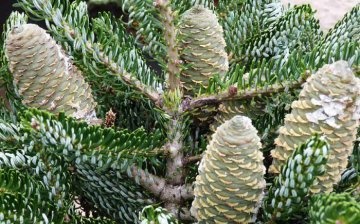
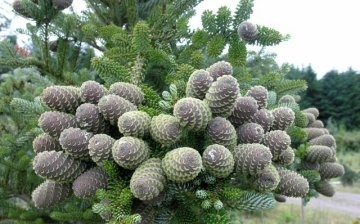
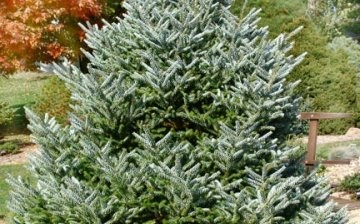
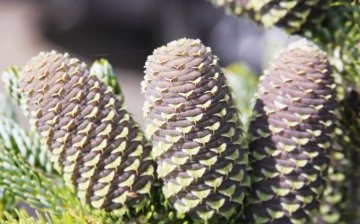


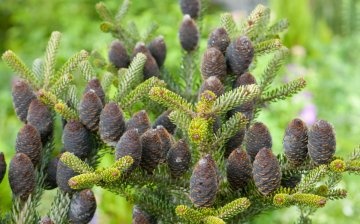
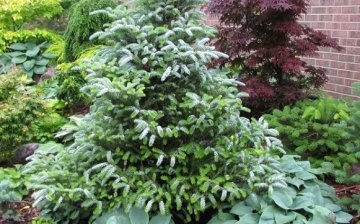








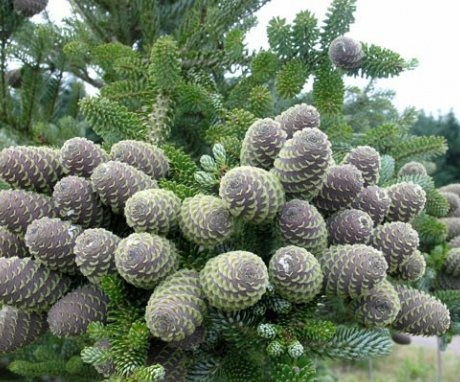
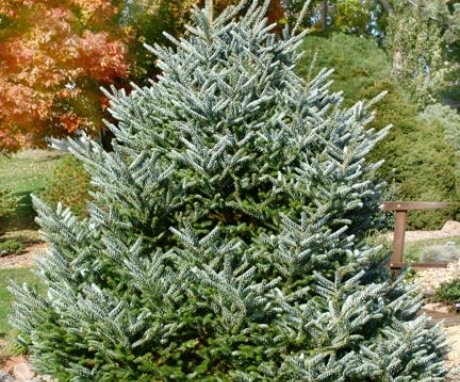
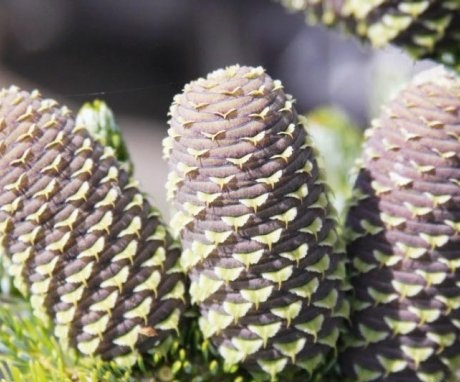
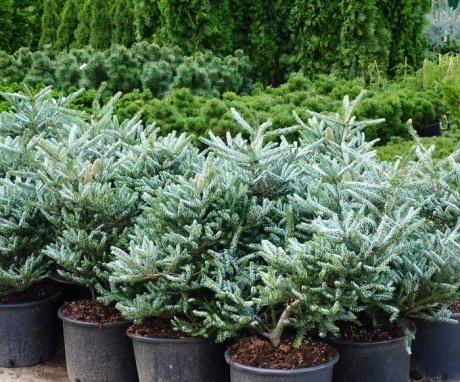
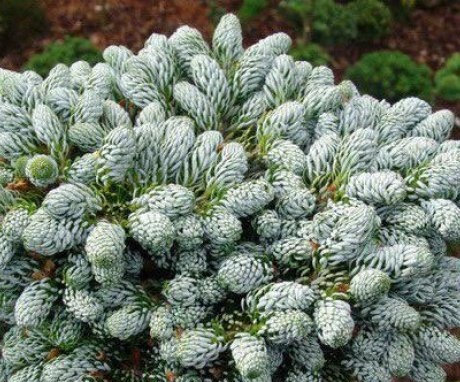
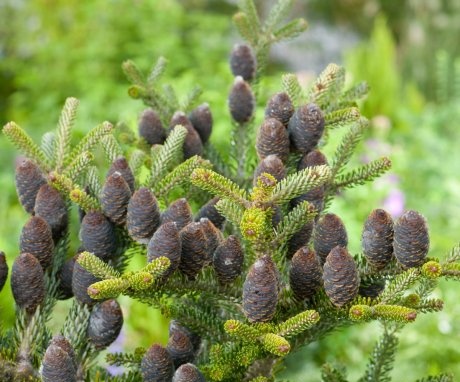
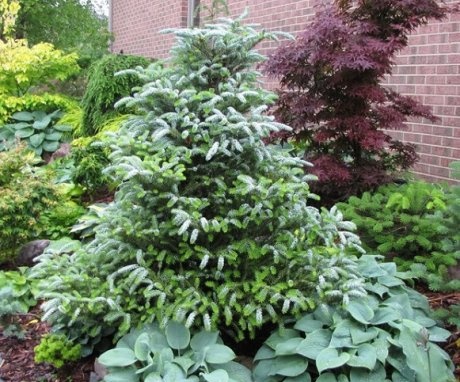
Neither spruce, nor pine, nor fir take root in our country. Even a juniper brought from a nearby forest turns yellow and dries up. Most likely the soil on our site is not suitable or there is a lot of sun.